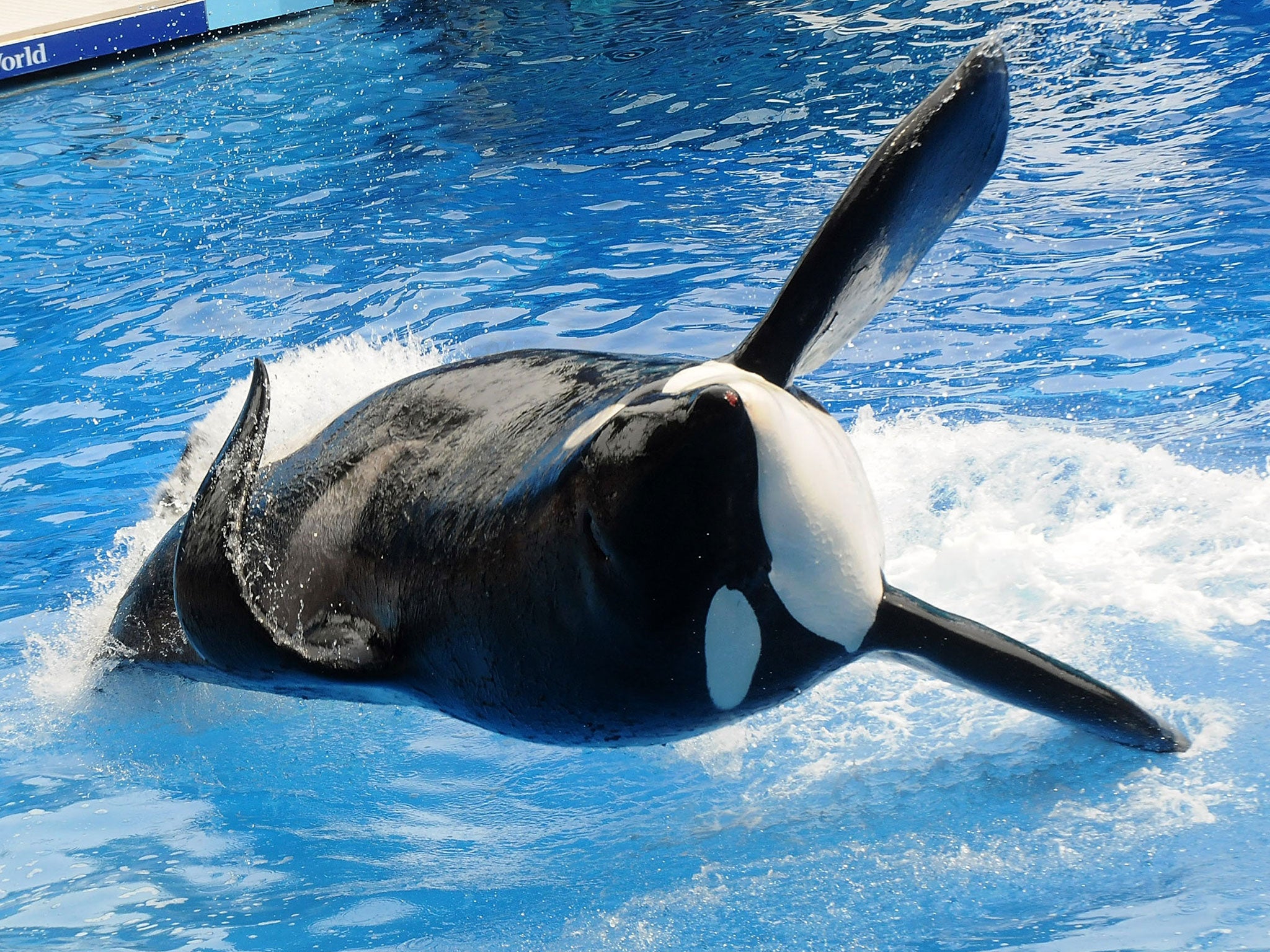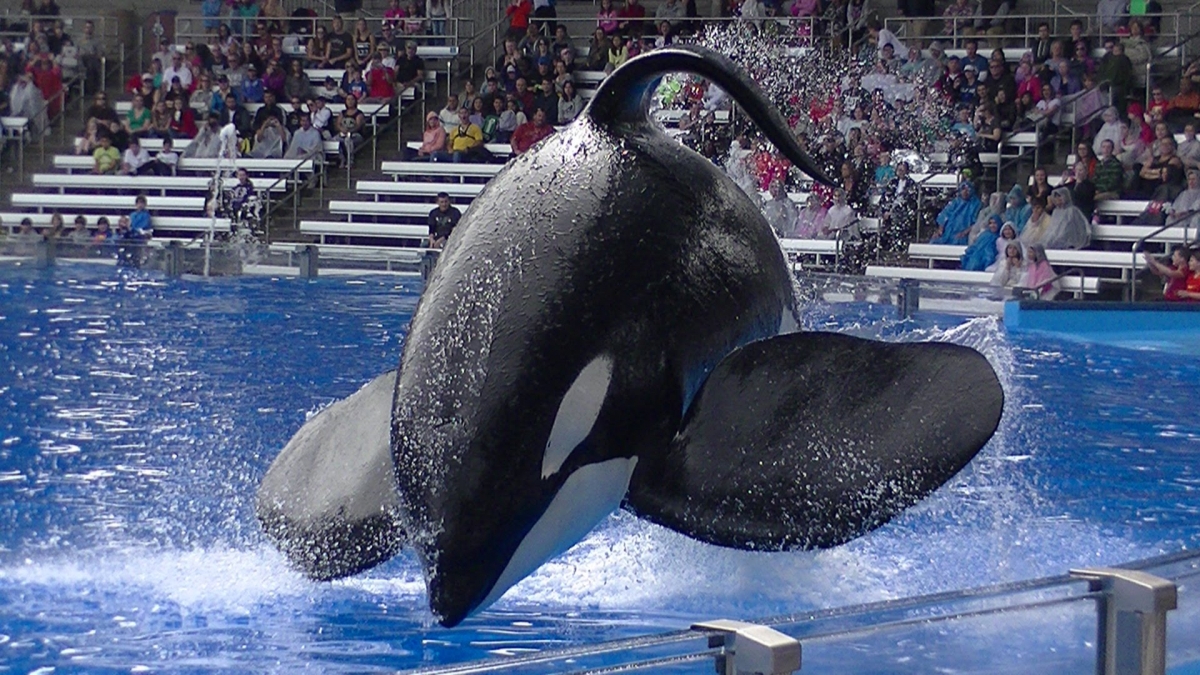Tilikum: The Orca Who Killed Three & Sparked Controversy | Learn More
Can a creature of immense power and intelligence be reduced to a spectacle, and at what cost? Tilikum, the orca whale, embodies this tragic paradox, his life a stark illustration of the ethical complexities surrounding marine mammal captivity.
The story of Tilikum is a complex one, woven with threads of capture, performance, and tragedy. He was not just an orca; he was a symbol of a larger debate, a debate that continues to resonate long after his death. His life, spanning over three decades, was primarily spent in captivity, a confinement that ultimately defined his existence and led to both notoriety and a global movement for change.
| Attribute | Details |
|---|---|
| Name | Tilikum |
| Species | Orcinus orca (Killer Whale) |
| Sex | Male |
| Birth | Estimated 1980 (Captured November 1983, Iceland) |
| Capture Location | Hafnarfjrur, Iceland |
| Death | January 6, 2017, SeaWorld Orlando, Florida |
| Length | Approximately 6.9 meters (22.6 feet) |
| Weight | Over 5,000 kg (11,000 lbs) |
| Known for | Involved in the deaths of three humans, subject of the documentary "Blackfish" |
| Offspring | Sired 21 calves |
| Captivity Locations | Sealand of the Pacific (Canada), SeaWorld Orlando (Florida) |
| Source of Information | SeaWorld Website (Reference) |
Tilikum's story began in the icy waters of Iceland, where he was captured in November 1983, near the town of Hafnarfjrur, close to Reykjavik. At the time of his capture, he was estimated to be around two years old, a young orca torn from his family pod. This separation, experts argue, is a foundational trauma for these highly social and intelligent creatures, setting the stage for behavioral and psychological challenges in captivity.
After his capture, Tilikum was transported to Sealand of the Pacific, a marine park near Victoria, British Columbia, Canada. This initial period in captivity was marked by adversity. He was housed with other orcas, and reports indicate that he was often bullied and harassed by the dominant females. This period highlights the unnatural social dynamics imposed upon captive orcas, where compatible relationships are often impossible to establish.
The tragic events that would later define Tilikum's life began at Sealand. In 1991, a young trainer named Keltie Byrne slipped into the orca enclosure. Tilikum, along with two other orcas, pulled her underwater, resulting in her death. The incident was a stark reminder of the inherent dangers of keeping such powerful animals in captivity, even in a controlled environment. The investigation into the incident revealed the limitations of human control over these apex predators.
In 1992, following the tragedy at Sealand, Tilikum was moved to SeaWorld Orlando in Florida. This marked a significant shift in his life, where he became a star attraction, performing in shows and siring numerous calves. SeaWorld, known for its impressive shows and educational programs, seemed to offer a more comfortable environment for Tilikum. However, the underlying conditions of captivity remained.
- Ivica Zubacs Wife Kristina Pri Their Love Story Nba
- Jackie Tohns Husband Unveiling Her Relationship Life Secrets
His time at SeaWorld was not without incident. While he continued to perform, his history of aggression and the incident at Sealand cast a long shadow. He was involved in two further fatal attacks on humans, including trainer Dawn Brancheau in 2010. This event, witnessed by a live audience, was a pivotal moment. It sparked an international outcry and intensified the debate about the ethics of keeping orcas in captivity.
The death of Dawn Brancheau at SeaWorld Orlando on February 24, 2010, was a watershed moment. The incident, in which Tilikum grabbed the trainer and pulled her into the water, leading to her death, was seen by numerous spectators. The details of the event, the eyewitness accounts, and the subsequent investigation exposed the risks associated with close interaction with orcas in captivity. The public reaction was one of shock, grief, and outrage, which ultimately led to increased scrutiny of SeaWorld's practices.
Tilikum's story is inseparable from the documentary "Blackfish," released in 2013. This film, directed by Gabriela Cowperthwaite, presented a critical examination of orca captivity and SeaWorld's practices. Through interviews with former trainers, footage of Tilikum's life, and analysis of the attacks, "Blackfish" painted a grim picture of the psychological and physical toll of confinement on these intelligent creatures. The documentary highlighted the unnatural social structures, the limited space, and the repetitive behaviors (stereotypies) common among captive orcas.
"Blackfish" had a profound impact on public opinion. It helped to shift the narrative surrounding orcas, transforming them from entertainment animals into victims of a system. The film prompted a significant drop in attendance at SeaWorld parks and fueled a movement against marine mammal captivity. The documentary's success demonstrated the power of storytelling in raising awareness and driving social change.
In the wake of "Blackfish," SeaWorld faced mounting pressure. The company initially responded with public relations campaigns defending its practices. However, the pressure was unrelenting, and the company eventually began to concede to the public and started to adopt reforms. SeaWorld announced its decision to end its orca breeding program, and phase out theatrical orca shows, in 2016. These policy shifts were a direct response to the negative publicity and the evolving public sentiment.
While SeaWorld's policy changes represented a significant step, many critics argued that more was needed. The focus shifted to the creation of orca sanctuaries, where captive orcas could live in more natural environments. These sanctuaries, ideally located in coastal areas, would offer the animals a greater degree of freedom, access to a more diverse ecosystem, and an opportunity to engage in natural behaviors.
The legal and ethical dimensions of Tilikum's life were also brought to the forefront. The 2012 legal case of SeaWorld (Tilikum et al.) addressed the question of whether orcas have constitutional standing. While the case was not successful in granting legal rights to orcas, it highlighted the legal complexities of dealing with sentient beings in captivity. The case reflected the growing recognition of animal rights and the need for a more nuanced understanding of the relationship between humans and animals.
The discussion around Tilikum's treatment, and the debate it sparked, also touched upon the methods used to capture orcas. The techniques, which were perfected in Washington state prior to the regulation of orca capture in the United States and its subsequent illegality, included the use of purse seines, high-speed boats, and even underwater explosives. These methods often resulted in the separation of families, and caused significant trauma to the captured whales.
Tilikum's death on January 6, 2017, marked the end of an era. The announcement of his death at SeaWorld Orlando, where he had lived for over two decades, was met with a mix of sadness and reflection. His legacy, however, continues. The story of Tilikum remains a powerful reminder of the impact that humans have on the natural world. The narrative around him, centered on the tragedy and the moral implications of his life, served as a catalyst for conversations. The discussion continues regarding animal welfare, marine mammal captivity, and the responsibility humans have to protect and respect the creatures with whom they share the planet.
The question of what constitutes a "good" life for an orca, especially one who has known only captivity, remains a central point of contention. For many, Tilikum's story underscores the inherent limitations of attempting to replicate a natural environment within the confines of a tank. The debate extends to the ethics of breeding orcas in captivity and whether such practices are justified by the entertainment they provide.
The controversy surrounding Tilikum also highlighted the physical and psychological challenges faced by captive orcas. The limited space, the lack of environmental stimulation, and the unnatural social dynamics often lead to stress, repetitive behaviors (stereotypies), and health problems. These factors raise serious questions about the welfare of captive marine mammals.
The story of Tilikum is not just about the death of three individuals, but about a larger conversation about ethics, animal rights, and the impact of humans on the planet. The narrative serves as a case study for the study of captivity, the ethical treatment of animals, and the broader relationship between humans and the natural world.
The legacy of Tilikum continues to influence the public perception of marine parks and the treatment of animals in captivity. His story is not simply a tragedy; it is a call to action, prompting a reflection on the responsibility that humans have for the well-being of other living creatures. His life underscores the importance of continuous reevaluation of the practices that govern the interactions with the animal kingdom.
It is undeniable that Tilikum's story is a complex one. The life of this orca, marked by both brilliance and despair, is a reflection of the challenges of the relationship between humans and other sentient creatures. His memory should continue to fuel the quest for a more compassionate and ethically sound approach to animal welfare. The impact of Tilikum is undeniable, and his story should serve as a reminder of the importance of kindness and empathy in our interactions with the natural world.



Detail Author:
- Name : Rubie Erdman Sr.
- Username : homenick.kenyatta
- Email : antwan.johnston@kovacek.com
- Birthdate : 1990-11-26
- Address : 8570 Kaylin Lights North Jolieberg, NM 27548-4075
- Phone : (240) 341-7461
- Company : Jenkins LLC
- Job : Private Detective and Investigator
- Bio : Saepe in sed exercitationem qui repudiandae sunt facere. Nisi quis atque non dolores tempore. Optio ipsum odit nihil qui quae deserunt.
Socials
facebook:
- url : https://facebook.com/donnell.harris
- username : donnell.harris
- bio : Odit sit incidunt veritatis magnam eligendi.
- followers : 3518
- following : 1107
twitter:
- url : https://twitter.com/donnellharris
- username : donnellharris
- bio : Soluta ut in illum. Eius totam est blanditiis. Et eos qui voluptatem consequatur.
- followers : 1129
- following : 595